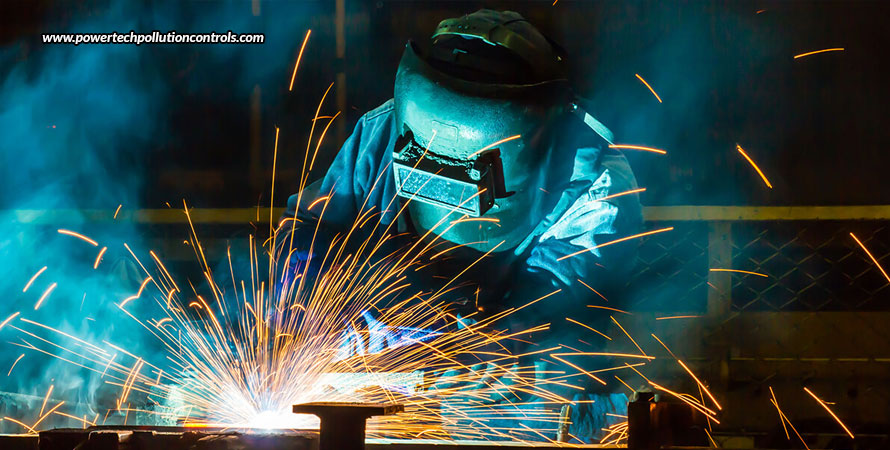
Welding – The History And Popular Landmarks
Metal joining has a long and illustrious history. The Bronze and Iron Ages in Europe and the Middle East provide the oldest examples of this. Little gold circular boxes were created during the Bronze Age by pressure welding lap joints together, which were created more than 2000 years ago. During the Iron Age, the Egyptians and eastern Mediterranean area learnt the art of welding, which has been proven by the many tools that have been found dated to that time period. The popularity of blacksmithing then increased during the Middle Ages, when hammer-welded iron objects were manufactured. The Middle Age also brought about advances in forge welding, where blacksmiths repeatedly pounded heated metal until bonding took place. Because Renaissance artisans were adept at the procedure, the business grew in the centuries that followed. However, the modern form of welding did not emerge until the 1800s.
1800 to 1900
The short-pulse electrical arc was found by Sir Humphry Davy in 1800, while the continuous electric arc was developed by Russian scientist Vasily Petrov in 1802. On the basis of these studies and experiments, Nikolai Benardos and Stanislaw Olszewski invented the first electric arc welding process in 1881–1882, known as carbon arc welding, which employed carbon electrodes. Then, a three-phase electric arc for welding was proposed by a Russian scientist named Vladimir Mitkevich in 1905, after which during the last decades of the 19th century, resistance welding was invented. The invention of thermite welding occurred in 1893, and at about the same time, oxyfuel welding started to gain popularity as one of the most popular welding methods due to its portability and relatively low cost.
1900 to 2000
The first coated metal electrodes were made available in 1900, wherein a clay or lime coating made the arc much more stable. Around this time, other additional welding techniques were also developed, including seam welding, spot welding, flash butt welding, and projection welding. After that, in 1919, C.J. Holslag created the alternating current welding procedure, and in 1920, P.O. Nobel created automated welding, which integrated arc voltage and bare electrode wires. Other significant milestones in the history of welding were the development of the Gas Tunsten Arc Welding (GTAW) and Gas Shielded Metal Arc Welding (GMAW) procedures that came about int he 1940’s. The 1960’s also saw several advancements in the welding industry, bringing about a variety of welding techniques like dual shield welding, inner shield welding, electroslag welding, plasma arc welding, and electron beam welding.
After 2000
Ever since the 21st century began, many other faster welding processes came into existence, such as friction welding, which uses rotational speed and upset pressure to provide friction heat. Laser welding is one of the newest processes.
Welding landmarks across the world
You can only imagine how much metal has been melted and bonded to date since so much welding has been done since the Bronze Age! Welding has been essential to numerous fields and industries, from buildings and pipelines to cars and airplanes. Let’s draw your attention to some of the most stunning and spectacular structures that have been erected across the globe, well-known for their welded designs.
- Iron Pillar of Delhi, the 23-foot-tall pillar made of rust-resistant iron, made by forge welding wrought iron between the 4th and 5th century
- Fullagar, the first fully welded ship in the world, built in 1917-1920, in the United Kingdom
- Maurzyce Bridge, the first welded road bridge in the world, located in Central Poland, built in 1927-1928
- Detroit Windsor Tunnel, the underwater tunnel built in 1930, connecting Detroit in Michigan to Windsor in Ontario, only one mile long, but containing more than 12 miles of welding work
- St. Louis Gateway Arch, built with stainless steel and carbon steel, using MIG-welding and spot-welding processes, in 1963 in the United States
- Grand Canyon Skywalk, the horseshoe-shaped steel and glass sculpture, extending 70 feet over the canyon’s edge, 4000 feet above the Colorado River in Arizona, built in 2003
- Cloud Gate in Chicago, consisting of steel plates curved over a steel rib skeleton, to resemble a drop of liquid mercury, built in 2004
These are just a few of the incredible welded constructions that can be seen across the globe. Whether you want to build one such incredible structure yourself, which could be added to this list in the future, or whether you carry out other minor welding activities at work, one thing is certain: welding entails a lot of metal burning. Also, the burning of metal produces a lot of metal vapours, all of which have the potential to be hazardous to the health of your employees, which is something you wouldn’t want, would you? So, we advise that regardless of how big or small your welding activities may be, be sure to take care of your employees by protecting them from such dangerous gases. What you can do is install Powertech Pollution Controls’ Fumekiller, the finest welding fume extractor India, which is a high-efficiency two-stage electrostatic precipitator, designed, developed, and manufactured for the capture and control of fumes, mist, smoke, and fine dust. So, get in touch and have your fume extractor installed right away!


